CROMOSOMA 14
GEN prenesilina-1
MUTACION E280A
Hubo un tiempo no muy lejano en el que, en el norte de Antioquia, en Colombia las gentes preferían abstenerse de tocar las heridas de algunos enfermos y las hojas de un árbol. Hubo un altercado, cuentan, y un cura lanzó la maldición: quienes se acercaran al árbol maldito padecerían “la bobera”.
En su libro "Cien años de soledad" , Gabriel García Márquez ilustraba en forma premonitoria y casi científicamente perfecta la temible enfermedad del Alzheimer. Decía el Nobel:
«(...) la india les explicó que lo más temible de la enfermedad del insomnio no era la imposibilidad de dormir, pues el cuerpo no sentía cansancio alguno, sino su inexorable evolución hacia una manifestación más crítica: el olvido. Quería decir que cuando el enfermo se acostumbraba a su estado de vigilia, empezaban a borrarse de su memoria los recuerdos de la infancia, luego el nombre y la noción de las cosas, y por último la identidad de las personas y aun la conciencia del propio ser, hasta hundirse en una especie de idiotez sin pasado» .
(Gabriel García Márquez, Cien años de soledad, Bogotá, Editorial La Oveja Negra, 1983, p. 42.)
Precisamente esa idiotez sin pasado es el drama que envuelve a esta enfermedad que, en un promedio de ocho años de desarrollo, va destruyendo el entorno cognitivo de la persona, su manera de entender el mundo, de moverse en él, sus memorias recientes y pasadas, su comprensión del lenguaje y su concepto espacio-temporal para perder finalmente su noción de motricidad.
Para entenderla en toda su dimensión, casi hay que ponerlo en estos términos: ¡al cuerpo se le olvida vivir!
«La imposibilidad de reconocer un orden en el tiempo y un norte en el espacio, el fracaso en los intentos de construir nuevos recuerdos y el desmoronamiento de los ya almacenados, es la marca trágica de esta peste de la memoria (...) el deterioro progresivo de los dones más preciados de la naturaleza: la conciencia, los recuerdos, las palabras y los afectos. »
En Antioquia, Colombia más de 5.000 personas sufren de un Alzheimer con una rara mutación, que hace que quienes la padezcan la sufran desde muy temprana edad.
En el departamento de Antioquia existen 25 familias con 5 mil miembros que padecen una enfermedad degenerativa denominada Alzheimer Familiar de inicio precoz, que además es hereditario, lo que es poco común en este mal.
En Antioquia se encuentra el grupo poblacional más grande del mundo con una forma genética de Alzheimer. Esta demencia de pérdida de memoria progresiva empieza a edad temprana en estos individuos, lo que es muy extraño porque normalmente esta enfermedad afecta a los ancianos. Esta última es la característica principal de estas familias, cuyo padecimiento comienza hacia la edad de los 47 ó 48 años de edad.
Otra de las particularidades de este mal es que el 50 por ciento de los hijos de un afectado tienen el riesgo de padecer la enfermedad.
Este grupo de personas, residentes en los municipios de Angostura, Yarumal, San José de la Montaña, Santa Rosa de Osos, Dabeiba, Liborina, Sopetrán, Donmatías, Olaya, Medellín, entre otros, son portadores de un mal que pocas personas en el mundo sufren. Cerca de 24 millones de personas padecen esta enfermedad en cualquiera de sus variaciones en todo el planeta.
Hace 15 años el grupo de neurociencia de la Universidad de Antioquia descubrió cuál era el gen alterado, que causaba la mutación responsable de esta enfermedad y se encontró que el gen es presilina 1 (proteína) en el cromosoma 14. Ese gen mutado lo denominaron “La Mutación Paisa” y es la causante del mal.
El neurólogo Francisco Lopera Restrepo, coordinador del Grupo de Neurociencias de la Universidad de Antioquia, dijo que para estos casos la consanguinidad no es muy importante, lo que quiere decir que los casos en los que se le aduce el problema a las relaciones sexuales entre parientes no tienen sustento.
“Lo que se cree es que hubo un efecto fundador que vino acá, trajo la mutación, la sembró y esta se fue regando por todo el departamento. Antioquia fue considerado durante muchos años como un aislado genético y eso pudo haber ayudado a que se haya concentrado ese problema en el departamento” señaló Lopera Restrepo.
Hacia 1745 se remite el factor fundador, año en el que se cree que desde España se trajo el mal. De pueblo en pueblo, de parroquia en parroquia, entre partidas de bautismo y otros documentos públicos, estos investigadores encontraron el origen remoto de la mutación. Para el año de 1745, Javier San Pedro Gómez y María Luisa Chavarriaga Mejía se establecieron en cercanías del municipio de Angostura. Al parecer, la mujer era la portadora del gen y por lo menos tres de sus hijos lo habrían esparcido.
Un grupo de científicos liderado por el neurólogo Francisco Lopera lograron identificar en ese año una pareja de la cual se deriva el 50% de las familias que han estudiado. Pero es posible que el otro 50 por ciento provenga de ese mismo tronco común, es decir que es un solo grupo familiar.
Por otro lado, como estas personas empiezan a padecer este mal a muy temprana edad, los científicos, nacionales e internacionales, esperan que sus cerebros, que están más limpios que los de una persona longeva, porque por lo general no padecen otras enfermedades, les ayuden a comprender de una mejor manera cómo funcionan las drogas utilizadas como tratamiento.
Para facilitar el hallazgo de una cura o de un procedimiento que permita retardar el inicio de este padecimiento, las familias han donado 45 cerebros de sus parientes fallecidos por el mal, para que con estos, los científicos de la U. de A. puedan estudiarlos y avanzar en el objetivo de neutralizar la enfermedad.
A los 48 años, María Elsy, hoy de 61 años, empezó con los problemas de memoria. Actualmente se encuentra en una etapa avanzada de la enfermedad.
Alzheimer’s Stalks a Colombian Family
By PAM BELLUCK
THE NEW YORK TIMES
YARUMAL, Colombia — Tucked away on a steep street in this rough-hewn mountain town, an old woman found herself diapering her middle-age children.
At frighteningly young ages, in their 40s, four of Laura Cuartas’s children began forgetting and falling apart, assaulted by what people here have long called La Bobera, the foolishness. It is a condition attributed, in hushed rumors, to everything from touching a mysterious tree to the revenge of a wronged priest.
It is Alzheimer’s disease, and at 82, Mrs. Cuartas, her gray raisin of a face grave, takes care of three of her afflicted children.
One son, Darío, 55, babbles incoherently, shreds his socks and diapers, and squirms so vigorously he is sometimes tied to a chair with baggy blue shorts.
A daughter, María Elsy, 61, a nurse who at 48 started forgetting patients’ medications, and whose rages made her attack a sister who bathed her, is a human shell, mute, fed by nose tube.
Another son, Oderis, 50, denies that his memory is dying, that he remembers to buy only one thing at a time: milk, not milk and plantains. If he gets Alzheimer’s, he says, he will poison himself.
“To see your children like this ... ,” Mrs. Cuartas said. “It’s horrible, horrible. I wouldn’t wish this on a rabid dog. It is the most terrifying illness on the face of the earth.”
For generations, the illness has tormented these and thousands of others among a sprawling group of relatives: the world’s largest family to experience Alzheimer’s disease. Now, the Colombian clan is center stage in a potentially groundbreaking assault on Alzheimer’s, a plan to see if giving treatment before dementia starts can lead to preventing Alzheimer’s altogether.
Most family members come from one Andes region, Antioquia. Geography, and Basque ancestry, have isolated people here, who call themselves paisas, countrymen. Over three centuries, many in this clan of 5,000 people have inherited a single genetic mutation guaranteeing that they will develop Alzheimer’s.
Large families, and intermarriage, have accelerated the spread. Mrs. Cuartas’s fourth debilitated child, in Medellín, Carlos Alberto Villegas, a former livestock trader and guitar serenader now often fed by baby bottle, married a distant cousin. His mother-in-law is an addled ghost; three of his wife’s 11 siblings, so far, are developing dementia.
With Alzheimer’s in both parents’ families, Mr. Villegas’s three children could face extraordinary risk. One, Natalia, 22, asks: “How long have I got, till I’m 35? There’s no way out.”
Memories begin failing in one’s 40s, occasionally as early as 32. By 47, on average, full-blown Alzheimer’s develops.
Their form of Alzheimer’s, early-onset, was once considered too different to provide clues about far more common late-onset Alzheimer’s, which has unknown causes and primarily affects people over 65.
But it turns out that both forms produce nearly identical brain changes and symptoms. Now, scientists will test as-yet-unproven treatments on Colombians genetically destined for Alzheimer’s but not yet showing symptoms. They will give a to-be-determined drug or vaccine and see if it prevents memory loss or brain atrophy. If their disease can be halted, that could generate treatments to protect millions worldwide from common Alzheimer’s.
Devising an Early Attack
Alzheimer’s has repeatedly resisted attempts to treat it. Current drugs, for people who are already impaired, show little benefit. Now scientists want to attack earlier. New findings show “the brain is badly damaged by the time they have dementia,” said Dr. John C. Morris, an Alzheimer’s researcher at Washington University in St. Louis. “Perhaps the reason our therapies have been ineffective or mostly ineffective is that we’re administering them too late.”
With Alzheimer’s afflicting 5.3 million Americans and 30 million people worldwide, numbers that some predict will double or triple by 2050, “we can’t wait to try to do prevention until we are absolutely certain what causes” the disease, said Neil Buckholtz, chief of dementias of aging at the National Institute on Aging. “This public health emergency,” he said, is “just going to get out of control if we don’t do something.”
But preventive research is difficult. Participants should be people guaranteed, or highly likely, to develop dementia, and with common Alzheimer’s identifying such people is challenging because the disease’s cause is unknown. Also, because people would not be sick when treated, potential negative side effects of drugs are especially worrisome.
Colombia appears to be the best option. Mutation carriers always develop Alzheimer’s, and researchers know roughly when. They can give treatment about five years before expected memory loss, then see if brain changes or symptoms occur later or not at all.
Since Colombians with Alzheimer’s are young, without many old-age ailments, they have “cleaner brains that can give a better picture” of whether drugs work, Dr. Buckholtz said.
And the extended family’s single location, large size and similar lifestyles provide enough comparable participants for solid scientific data.
“This is the only place in the world where we can find a family like this, where it’s possible to do prevention therapy more easily,” said Dr. Francisco Lopera, a Medellín neurologist who identified the family’s illness 28 years ago and helped discover its cause, an altered protein on the presenilin 1 gene on chromosome 14: the Paisa mutation.
Scientists consider Colombians not only valuable subjects but also deserving ones. “We’d be giving people at the highest imminent risk of Alzheimer’s access to treatment they wouldn’t otherwise have,” said a project leader, Dr. Eric M. Reiman, director of Banner Alzheimer’s Institute in Phoenix.
Scientists are recruiting participants, hoping to start testing next year. Family members without symptoms, roughly 38 to 45 years old, will be gene-tested, given treatment or placebos, and monitored with memory tests, brain scans and other measures. A companion American trial will involve 60- to 80-year-olds with another rare trait: two copies of a different gene, which does not cause, but substantially increases risk of common late-onset Alzheimer’s.
The treatment, likely to be chosen by independent experts, could have failed with already demented patients or be something new. It will attack a protein, beta-amyloid, considered a culprit by many scientists because it creates plaques, deposits between nerve cells. The treatment could be a drug that destroys or prevents plaques, or a vaccine that contains or encourages production of anti-amyloid antibodies.
The project was not always an easy sell. For years, “I’ve been sort of shopping this around,” said Dr. Kenneth S. Kosik, a University of California, Santa Barbara, neuroscientist, who has long studied the family. “People would get interested, then realize there are huge logistical hurdles. Medellín was a murder capital of the world. Nobody wanted to even talk about going to Colombia.”
Challenges included a relatively uneducated population with misconceptions about Alzheimer’s, that it was transmitted through sex with already mad women, or from blood of a sufferer’s self-inflicted scratches. Relatives, who handle caregiving here, sometimes take desperate measures, like locking the “affecteds” in rooms to prevent wandering.
Marriage options were often limited, and many did not realize that intermarriage could increase chances of passing Alzheimer’s to children. When Laura Cuartas’s son Carlos Alberto Villegas married a cousin, Blanca Nelly Betancur, people knew La Bobera was on both sides, and some called the family “the clan of the bobos.” But while Mr. Villegas told his bride-to-be that his father “had become foolish,” she said, back then, “Carlos was healthy.”
Others talk of drastic reactions if they learn they are mutation-carriers.
“I’d kill myself,” said Mr. Villegas’s brother-in-law, Albeiro Betancur, 40, a bus driver with four children. “I’d throw myself under a train.”
Such reactions, plus the lack of genetic counseling here, are why people gene-tested by Dr. Lopera, the Medellín neurologist, are not told if they will get Alzheimer’s. Even he knows carriers only by computer code, not by name.
American research participants sometimes learn their genetic status, and questions arose about testing drugs on Colombians who are unaware they are carriers. The answer was to give all participants something, so mutation-carriers are not revealed. Placebos will be given to noncarriers; treatment or placebos to carriers.
Project leaders said the treatment’s safety was the highest priority. Some past drug trials on already-sick Alzheimer’s patients were stopped because patients developed brain inflammation or risked heart problems. If treatments tested here were devised for 80-year-old Alzheimer’s patients, doses must be calibrated for 40-year-olds, some of them potentially pregnant women. And testing drugs on people who are not yet sick can be especially risky.
“We’re going to be treating people who are completely healthy,” Dr. Kosik said. “The nightmare scenario is obviously that there’s a serious side effect.”
There were other challenges: upgrading brain-scanning and other equipment, and persuading drug companies to accept the financial and safety risks of sponsoring such research.
“Two years ago,” said Dr. Pierre N. Tariot, a project leader who directs the Banner Alzheimer’s Institute’s memory disorders center, “most scientists would have said this is not feasible,” considering it “science fiction.”
Now, scientists are recruiting drug-industry sponsors for the $50 million trial They currently have $8 million from donors. Some companies envision testing new treatments; others envision recovering investment in therapies that failed with already-demented people. “Prevent even one early-onset patient from getting the disease, that’s a major victory,” said Dale Schenk, chief scientific officer for the Elan Corporation. “It’s not even debatable whether this should be done. It has to be done.”
The Search for Markers
Researchers will also explore when Alzheimer’s begins, and why, examining which brain changes, or biomarkers, precede symptoms, Dr. Reiman said. If brain shrinkage, brain activity or beta-amyloid levels are identified as definitive biomarkers, doctors may be able to treat those, the way they treat cholesterol to prevent heart disease.
Scientists will also intensively study 40 18- to 25-year-olds to see if brain changes appear in people that young. If they do, children 8 to 17 will be studied.
A new memory test catches an early symptom: remembering only one characteristic of something. By age 35, Paisa-mutation carriers “may remember seeing an apple, but not remember it’s in the fridge,” said a psychologist, Dr. Mario Parra, who created the test, in which people shown colored shapes must recall both the shapes and colors.
Scientists recently rode into Angostura, ancestral home of many family members. “First time I’ve seen gringos come to town,” a villager remarked.
Villages like Angostura had often been too dangerous. Once, a nurse assisting Dr. Lopera, Lucía Madrigal, was kidnapped by guerrillas while collecting blood for gene testing. “I do not care how long you retain me,” she said, but “take care of the samples.”
She was released eight days later (guerrillas chilled the blood in a river), but Dr. Lopera’s team stopped visiting some villages for years. During that time, Ms. Madrigal visited Angostura only when asked by a guerrilla boss. His mother had Alzheimer’s.
With Angostura still risky, Dr. Lopera scheduled a brief visit, sending advance staff members instructed not to disclose that Americans were coming.
As a strong sun sliced the sky and rifle-bearing army soldiers watched, family members squeezed into a squat building, Catholic maxims on walls.
“You may think you live in a very small town in a remote corner of the world,” Dr. Kosik said. “But Alzheimer’s is of concern to people all over the world, and this town is very special.”
Questions flew.
“Give us this medicine and then will we ever hear from you again?” Scientists reassured them.
What about economic assistance? Dr. Tariot said trial sponsors would be asked to provide needs like antibiotics, food and adult diapers.
For years, Dr. Lopera has been frustrated that he could provide only support, and medication for ancillary Alzheimer’s symptoms like seizures and sleeplessness. Albeiro Betancur, Mr. Villegas’s brother-in-law, said he had stopped participating in Dr. Lopera’s previous research, because there was “no prospect of any cure.”
With this project, some, like Laura Cuartas’s daughter, Gloria, who helps care for her demented siblings, worried about “damage that can be done” by side effects, but many, including Mr. Betancur, welcomed the possibility of “taking something that might help.”
Potential results are years away.
Recently, Dr. Lopera examined Laura Cuartas’s son, Oderis Villegas, whose fading memory makes him carry calendars, writing each night, “do not cross out tomorrow.”
But for Dr. Lopera, Mr. Villegas, studiously groomed in yellow shirt and polished shoes, puffed with bravado, giddily agreeing to hop, whistle, touch his nose. “I’m the big help in the house; that’s why I don’t work,” he said. “I feel fine every day. In every sense.”
“When were you born?” Dr. Lopera asked.
“April 1960.”
"How old are you?”
“Close to 70, right?”
“You have a good memory?”
“Yes, sir.”
Dr. Lopera listed three sentences: “The boy walks down the street,” “The man drinks coffee,” “Oranges grow on trees.”
“What was the first?”
“The boy drinks coffee.”
“The second?”
“The children walk on trees.”
Asked about his Alzheimer’s risk, Mr. Villegas said, “I don’t have it,” laughing.
“Just by chance and when I am distracted by people or something,” he said, “I may forget, but that is very rare. For anyone to say that I have the beginning of Alzheimer’s, no.”
www.iniciativanomeolvides.org

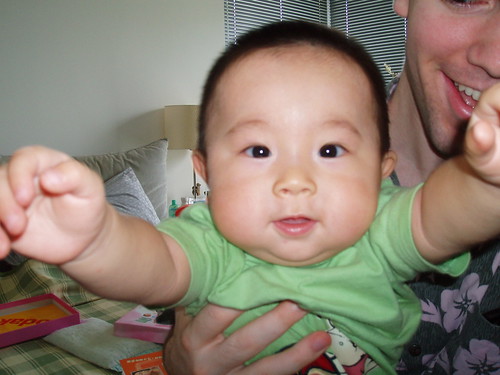



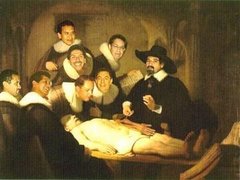




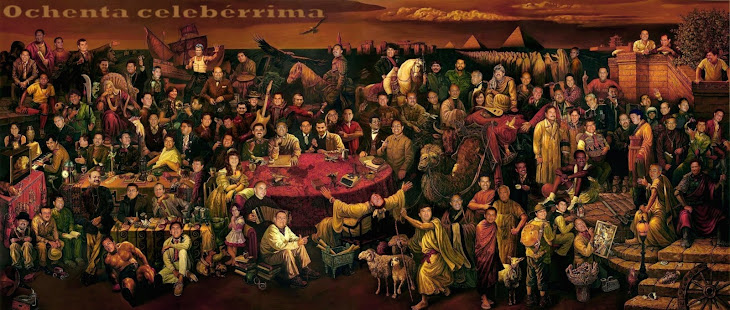
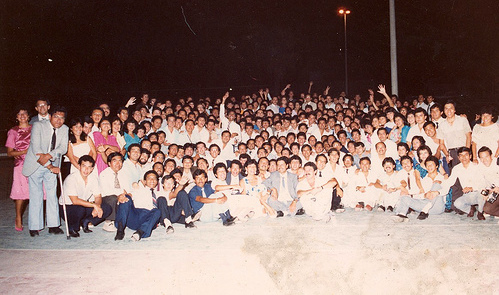
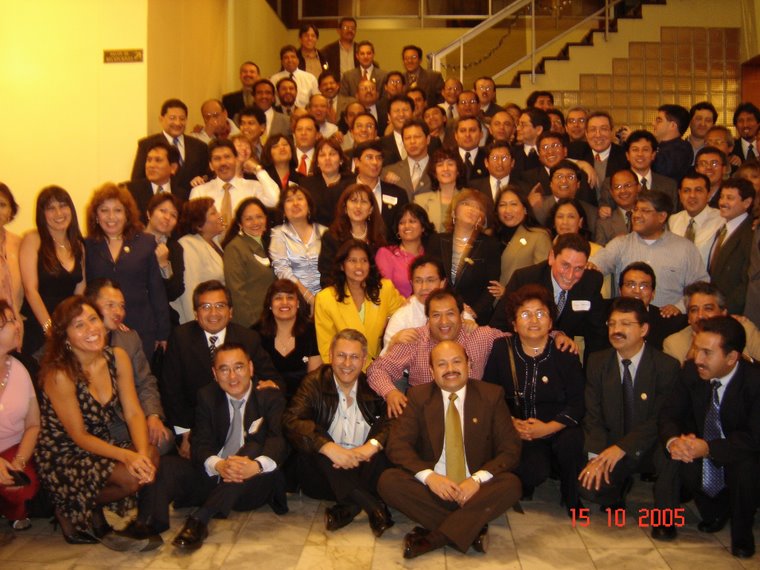
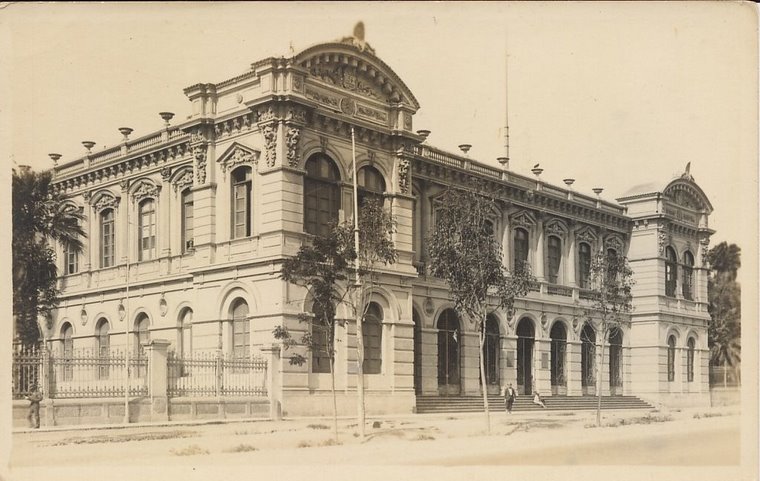
No hay comentarios.:
Publicar un comentario